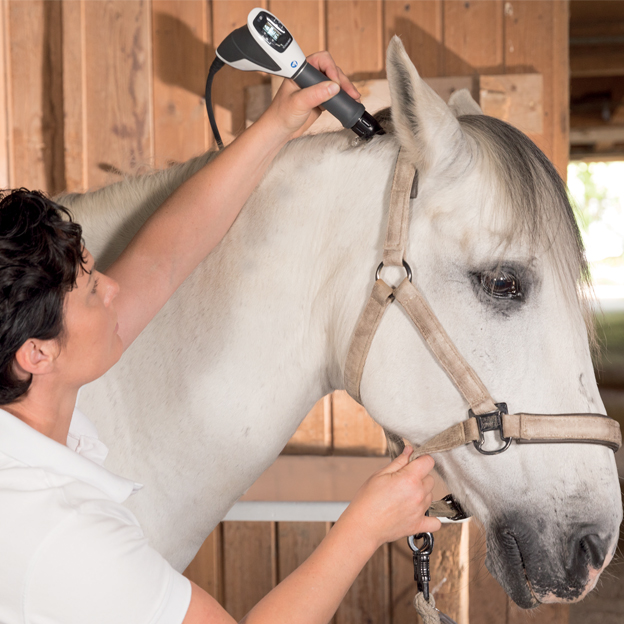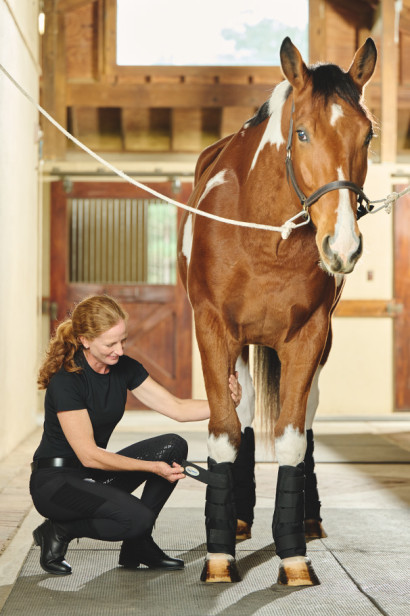Equine Therapy for Injury Recovery: Exactly How Horses Assist Heal Emotional Wounds
Equine Therapy for Injury Recovery: Exactly How Horses Assist Heal Emotional Wounds
Blog Article
Exactly How Laser Treatment in Equine Treatment Is Reinventing Veterinary Take Care Of Steeds
Laser treatment has emerged as a transformative strategy in equine vet care, offering a non-invasive remedy that accelerates healing and boosts overall health. Leveraging precise light wavelengths, this cutting-edge treatment boosts mobile regrowth, lowers inflammation, and minimizes discomfort. Its efficiency extends from musculoskeletal injuries to chronic ailments like osteo arthritis, dramatically enhancing wheelchair and life quality for horses. The portability and flexibility of laser treatment gadgets even more underscore their growing necessity among vets. As we check out the detailed auto mechanics and real-world successes, the extensive influence on equine medical practices ends up being increasingly obvious.
Understanding Laser Therapy

The innovation behind laser therapy is grounded in the concept of photochemistry, where photons are taken in by chromophores within cells, bring about increased ATP production and inflection of responsive oxygen species (Equine Therapy). This, consequently, advertises cellular expansion, minimizes inflammation, and increases healing. Veterinary specialists use various sorts of lasers, including low-level lasers (LLLT) and high-power Course IV lasers, depending on the details therapeutic goals and the nature of the equine condition being dealt with
Different laser wavelengths and power setups are thoroughly selected to target numerous cells midsts and accomplish wanted scientific end results. Safety and security methods are extremely important, as inappropriate usage can cause thermal damages or suboptimal therapeutic results. Thus, a thorough understanding of laser therapy's systems and applications is important for its efficient application in equine veterinary technique.
Advantages for Equine Health
The myriad advantages of laser treatment for equine wellness include boosted recovery, pain decrease, and enhanced wheelchair. This sophisticated therapy method leverages details wavelengths of light to permeate cells, promoting mobile feature and advertising fast cells fixing. The non-invasive nature of laser treatment guarantees marginal anxiety and discomfort for the steed, facilitating a smoother recuperation process.
Boosted recovery is one of the primary benefits, as laser treatment increases mobile regrowth and collagen synthesis. Pain reduction is attained through the anti-inflammatory effects of laser treatment, which decreases swelling and lowers the manufacturing of pain-inducing chemicals.
By reducing inflammation and discomfort, and boosting tissue repair, laser therapy helps in recovering joint feature and muscle mass adaptability. Hence, laser therapy stands as a transformative tool in contemporary horse veterinary care.
Usual Problems Dealt With
Laser therapy has actually emerged as a versatile treatment alternative for a selection of typical equine problems. Furthermore, laser treatment is effective for problems like osteo arthritis, where it assists alleviate joint swelling and promote cells fixing.
Wound management is another area where laser therapy has actually shown substantial pledge. Chronic injuries or slow-healing ulcers can be especially challenging in equines, yet laser treatment boosts mobile regeneration and boosts blood flow, therefore accelerating the recovery procedure. Furthermore, laser treatments have been successfully used in handling unguis problems such as laminitis and abscesses, minimizing discomfort and advertising much faster recuperation.

Modern Technology Behind Laser Treatment
Beyond the myriad problems treatable with laser therapy, the technology itself advantages closer exam. At the heart of laser therapy is using certain wavelengths of light to penetrate tissues and evoke organic responses. These wavelengths, usually ranging from 600 to 1000 nanometers, are precisely taken in by chromophores in the skin, muscular tissue, and various other cells, initiating a waterfall of mobile occasions.
Laser devices made use of in vet medicine often utilize low-level laser treatment (LLLT) or cold laser therapy. Unlike high-powered medical lasers, these tools operate at reduced energy levels, enhancing restorative benefits while lessening thermal damages. The power from the laser light promotes adenosine triphosphate (ATP) manufacturing, boosts cellular metabolic he said rate, and speeds up tissue repair processes.

Success Stories and Study

Showcasing the substantial advantages of laser therapy, numerous success stories and study brighten its transformative effect on equine health and wellness. One such situation entails a thoroughbred racehorse suffering from persistent tendonitis. Traditional therapies yielded marginal improvement, but after incorporating laser therapy into the program, the steed exhibited substantial decreases in inflammation and discomfort within weeks, eventually returning to competitive auto racing.
An additional engaging example includes a dressage steed identified with severe pain in the back, restricting its efficiency. A veterinary group employed low-level laser treatment (LLLT) to target the swollen areas, resulting in significant improvement in adaptability and a remarkable reduction in discomfort. Over several sessions, the equine regained its peak type, showcasing the effectiveness of laser therapy in dealing with bone and joint concerns.
Additionally, a study performed at a leading equine center analyzed 50 equines with various soft cells injuries treated with laser therapy. The outcomes were striking: 85% of the steeds demonstrated accelerated healing times and improved movement. These cases underscore the adaptability and effectiveness of laser treatment in equine medicine, offering a non-invasive, scientifically-backed method to enhancing recovery and performance in equines.
Final Thought
Laser treatment is transforming equine vet treatment by supplying a non-invasive treatment that speeds up healing, reduces swelling, and alleviates discomfort. With its effectiveness in dealing with an array of conditions, from bone and joint injuries to chronic disorders like osteoarthritis, this technology considerably improves equine health and wheelchair. The transportability straight from the source and adaptability of laser therapy further highlight its transformative effect on veterinary methods, strengthening its function as an important tool in modern-day equine health care.
Report this page